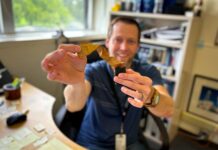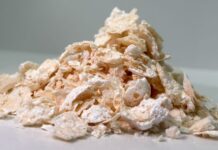
The US Stanford scientist Paige Fox and her team from the Division of Plastic & Reconstructive Surgery at the Stanford University Medical Center alongside Zhenan Bao and his team from the Department of Chemical Engineering at Stanford University have developed an implantable strain and pressure sensor. The sensor is made from fully biodegradable polymers and could be used to track the healing of tendons and then degrade after its useful lifetime.
Their work presents the implementation of fully stretchable and biodegradable organic materials as biomechanical sensors. They primarily used organic materials because they offer the advantages of versatility in molecular tuning for desirable degradation kinetics, as well as easy processing, and mass production capabilities.
The researchers also selected materials that are well established for their excellent biocompatibility upon degradation, potentially reducing the timeline for clinical translation. In contrast, the cytotoxicity of carbon nanotubes (CNTs) may prevent the use of degradable CNT-PLLA (polylactic acid) composites in biomedical implants.
The key elements of the material design of the sensor are the two biodegradable elastomers poly(glycerol sebacate) (PGS)17 and poly(octamethylene maleate (anhydride) citrate) (POMaC)18. Both materials were initially developed for tissue engineering applications inside the body. PGS is approved by the US Food and Drug Administration (FDA) for biomedical use, while POMaC has been subject to extensive biocompatibility studies, demonstrating its cell and tissue biocompatibility comparable to that of PLLA control.
The sensor consists of Photocrosslinked POMaC networks (PPOMAC) for the Top Layer, an ester bond crosslinked photocrosslinked POMaC (EPPOMAC) for the Bottom Layer. The synthesis of PPOMaC and EPPOMaC was performed using the mixture of maleic anhydride (Fluka, CAS 108-31-6), citric acid (Sigma-Aldrich, CAS 77-92-9) and 1,8-octanediol (Sigma-Aldrich, CAS 629-41-4).
Read more: Fully Biodegradable Sensor for Rehabilitation Monitoring
thumbnail courtesy of azosensors.com















